There are many pretty warm days in mid-October, with temperatures just below 20 degrees Celsius, and it gets slowly cooler towards November. Sometimes temperatures are below fifteen to ten degrees Celsius, so it is ideal to bring a scarf and wear a coat. October and November are the ideal months to go outside to enjoy the wonderful colours of autumn's tree foliage in and near Berlin.
433,000
trees line Berlin's streets. Come autumn, the leaves start falling like
the Berlin wall and everything looks like a painting. Fun fact: 1900
city-employees are needed to sweep up the fallen leaves and transport
them away. Days
feel like dipped into softener, there aren't any real sharp contours
when one is out for walks in the parks and forests. Everybody seems to
just drift along, as there would be no worry in the world. Simply
hanging on to the last warm moments, and drinking in the colour of the
changing leaves, before the harsh winter is about to come and grips us
with its cold hands.
If
you like to spend time in nature, you won’t have to go far. I don't
like autumn. I love it. Berlin is a super town at this time of the year.
Autumn colours are intoxicating and sweet. A sea of blue, red, green,
gold, brown and yellow. There are lakes, forests, parks, log houses and
most often you are going to be all alone (you might meet some dog
walkers). Autumn in and near Berlin makes for perfect day trips and is
excellent for hiking and taking photos.
River Havel in Berlin-Wannsee in autumn
The Havel river rises in Mecklenburg-Western Pomerania, flows through Brandenburg, runs 29 kilometres through Berlin and flows into the river Elbe in the state of Saxony-Anhalt. The Havel was developed as a shipping route and is partially straightened.
Peacock island in autumn
You can visit Peacock island, with 400 old oak trees and the oldest rose garden in Berlin a protected UNESCO World Heritage site. Pfaueninsel, Nikolskoer Weg, 14109 Berlin. Visit the website for information. How to get here: Jump onto the S-Bahn and get off at station Wannsee, from where you catch the bus service 218, to get off at the station Pfaueninsel.
Moorlake in Wannsee in autumn
So romantic. Prussian King Friedrich Wilhelm IV built a forester's lodge and a stable building built in Bavarian style on the banks of the Havel in 1840 in honor of his wife, Elisabeth von Wittelsbach, who was born in Bavaria. It was used by them for recreation and hunting parties. In 1896, the royals rented out the lodge as a restaurant, and a farm building and a ballroom were added. Until 1918, the couple used the guest room on the upper floor exclusively for themselves and personal guests. For decades now, the lodge houses a restaurant that also offers literary events.
Moorlakeweg 6, 14109 Berlin-Wannsee. Hours: from 11am. Closed Monday and Tuesday. Visit the website for more info. How to get here: Jump onto the S-Bahn and get off at station Wannsee, from where you catch the bus service 218, to get off at the station Pfaueninsel, from there it is a twenty-minute walk along the river.
Blockhaus Nikolskoe in Wannsee in autumn
There is a log house in Russian style, and the view from there is breathtakingly beautiful. King Frederick William III built it in 1819 as a present to his daughter Charlotte, who was married to the Russian Tsar Nicolas I. Next door, and only a few steps from the log house restaurant is the Church of St. Peter and Paul in Russianorthodox style.
Nikolskoer Weg 15, 14109 Berlin. Hours: Monday to Sunday 11am to 6pm. How to get here: Jump onto the S-Bahn and get off at station Wannsee, from where you catch the bus service 218, to get off at the station Pfaueninsel, from there it is a five-minute walk.
Mitte and Prenzlauer Berg in autumn
A walk through Mitte is an excellent thing to do at any time of the year, and especially so in autumn. There is one stunningly beautiful tree with a stink problem though. The gingko trees start to smell like vomit, this is not fun. Their autumn-leaves have a bright-yellow colour. Have you ever been somewhere where somebody dropped a butyric-acid-stink-bomb? Right, that is the smell. Only the female trees stink this horrible. Naturally curious about the world around me, I jumped onto google maps and walked along these streets that have the smelly trees, and, I found out that they were only planted sort of recently, as in (roughly) the last decade. I wonder why on earth didn't they plant the male version and how can people who live near these trees can cope with that smell? Berlin is pretty in autumn, better hold your breath around these trees. Make your way to Unter den Linden, and from there walk up Prenzlauer Allee to Prenzlauer Berg for a stroll through colourful streets.








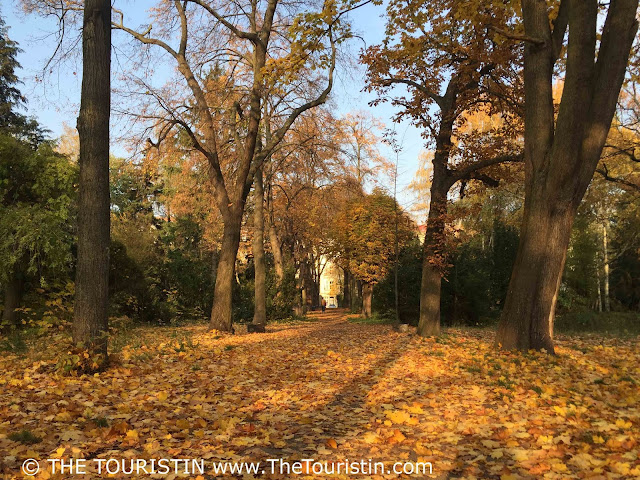
Tiergarten - the central park of Berlin in autumn
This is the green lung of the city, that description is heavily overused in any town, how else can I describe this park? Joggers run, couples walk their dogs, families play in and with the leaves. A magical place in the city. Only a few paths in the Tiergarten have lamps, the majority of the park is pitch black at night. Best to visit the Tiergarten during the day along the Straße des 17. Juni, 10557 Berlin.
Berlin Weißensee in autumn
In the Berlin borough of Weißensee there is this idyllic lake and park. Weißensee is like a small town in a large city (Berlin). You can cycle here from Alexanderplatz, it is only five kilometres, or take the tram M4, which stops directly at lake Weißer See. The borough is named after its lake.
Lake Tornow in autumn
You can walk all around Lake Tornow in Ruppin Switzerland. Lake Tornow is only 12 metres deep and it lies in the middle of a conservation area. Dewy moss covers hillsides. In autumn, the forest floor is already covered densely by leaves. It feels like walking over an expensive and very soft shaggy carpet of reddish colour. Go and see this yourself. Read more about it and how to get to the lake, here: Perfect Indian Summer at the Tornowsee in Brandenburg. Travel Germany.
Grumsin Forest
There are over 650 UNESCO recognized biosphere reserves worldwide (as of today). And ever since 1990 the Biosphere Reserve Schorfheide-Chorin is one of them. UNESCO classifies the cultural landscape between the upper Havel, the lower Oder and the Barnim in the north-eastern part of the Mark Brandenburg as so interesting and important that it is one of the few most valuable landscapes in the world and with that also part of the global research program "Man and the biosphere "(MAB). Make your way to the Grumsin Forest. How to get to Grumsin Forst: Via the A11 towards Angermuende. Exit Joachimsthal and follow the signage to Angermuende. Read more about it here: A Magical Place in Germany: Visit the UNESCO World Heritage Beech Forest in Grumsin.
Stahnsdorf in autumn
Make your
way to Stahnsdorf in the southwest of Berlin, in the state of Brandenburg. In
Stahnsdorf you can visit the tenth largest cemetery in the world, which is
Germany's second largest one (if it interests you, Germany's largest cemetery
is in Hamburg). The wooden cemetery chapel, built between 1908 and 1911, is the
true highlight. It looks like one of Norway's typical stave churches. Please
keep in mind that the cemetery and its wooden chapel are still in use (no
running, shouting, selfies etc).
Bahnhofstrasse
2, 14532 Stahnsdorf, Brandenburg. From Alexanderplatz in Berlin, take the regio
to Potsdam. In Potsdam jump onto the bus X1 before you jump off after just four
stops. From the bus stop it is a short walk of about five to ten minutes to the
entrance.
Linum in autmn
Linum is in the moor landscape of the Upper Rhinluch surrounded by meadows. While photo-hunting for cranes, I pass by a farmstall, there is pumpkins everywhere. I take a gazillion photos of the yummies, and soon realize they look like art. As I chat with the farmer, he tells me that he grows 150 pumpkin varieties, many of the seeds come from abroad, often friends bring them back home from their vacation. The guy admits that he hasn't tried every single variety this season... yet. We both laugh. He surely is on a pumpkin mission. I hop into a local café, have cake and a coffee. As I pay, the waitress gifts me a jute bag that has a print of a robin redbreast and the words: with using this bag you protect the birds from hazardous plastic. You simply must love Brandenburg. How to get to Linum: The town is roughly 60 kilometres from Alexanderplatz (in the very centre of Berlin). Read Travel Germany. Tips for your Eurasian Crane Safari in Linum.
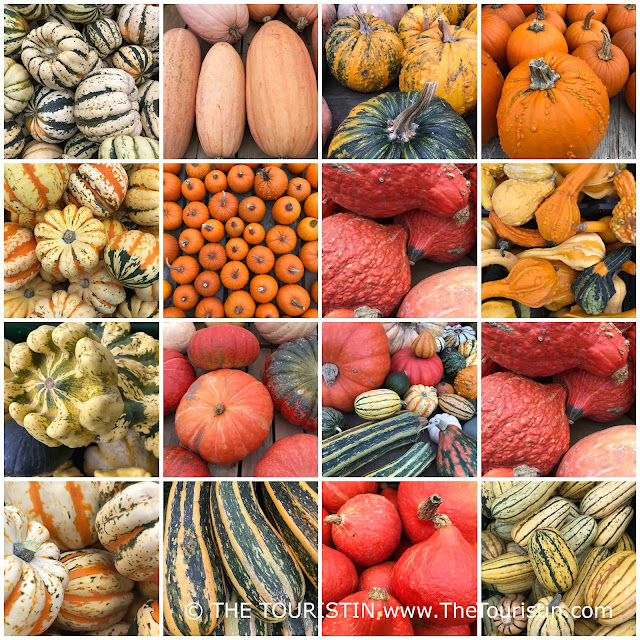

Liepnitzsee / Lake Liepnitz in autumn
Liepnitzsee
(Lake Liepnitz) is one of the cleanest lakes in the state of Brandenburg. In
summer, it is beautiful for swimming. In autumn, it becomes one of the most
colorful places to visit near Berlin. From Alexanderplatz take the U8 to
Gesundbrunne. Jump onto the U2 to Bernau, and once you arrive there, take the
bus to Wandlitz and Uetzdorf. From there it is a walk of about half an hour to
reach the lake.
Werder
(Havel) in autumn
Werder
(Havel), just around the corner from Potsdam, is a historic Old Town with
cobbled lanes lined by colourful period properties on an island surrounded by
several lakes. It is picture-perfect, especially so in autumn.
You can take the Regio 1 from Alexanderplatz that brings you directly to Werder
(Havel).
Babelsberg
park and palace in autumn
Babelsberg
palace and its park on the Havel River is beautiful in autumn. The park was the
idea of Emperor William I and his wife Augusta. It is designed by two landscape
architects, Peter Joseph Lenné and Prince Hermann von Pückler-Muskau. To see
more of his work, read Travel Germany and Poland – UNESCO World Heritage site Prince-Pueckler-Park Bad Muskau and Muskau Castle. The palace is UNESCO World
Heritage site. From Alexanderplatz in Berlin, take the S7 to Griebnitzsee and
from there take the bus 616 to Potsdam/Babelsberg.
Pretty autumn spots in and near Berlin
You
probably might have not thought about how beautiful Berlin and Brandenburg in autumn looks and
feels, just have a look around on your next trip to Berlin.
From Berlin with love

.JPG)
.JPG)
.JPG)
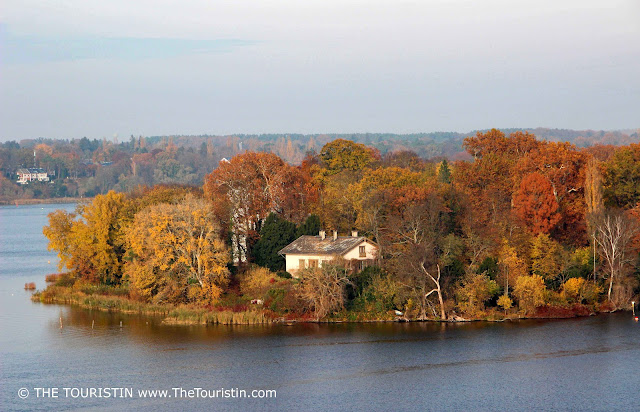

.JPG)
.JPG)

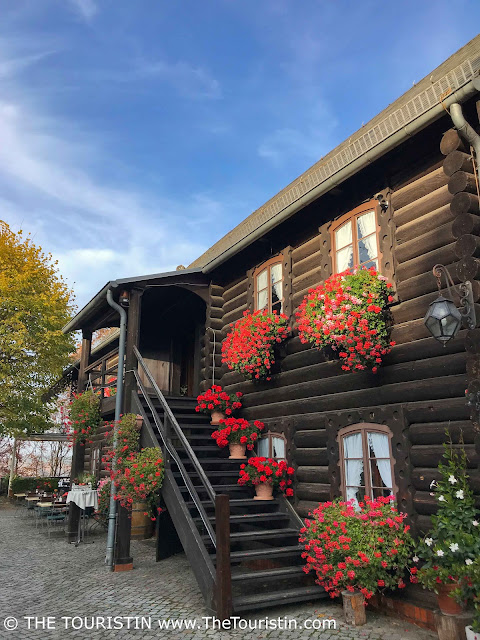
.JPG)









.JPG)
.JPG)
.JPG)
.JPG)
.JPG)
.JPG)
.JPG)
.JPG)
.JPG)
.JPG)
.JPG)
.JPG)
.JPG)
.JPG)
.JPG)

.JPG)
.JPG)
.JPG)
.JPG)
.JPG)
.JPG)
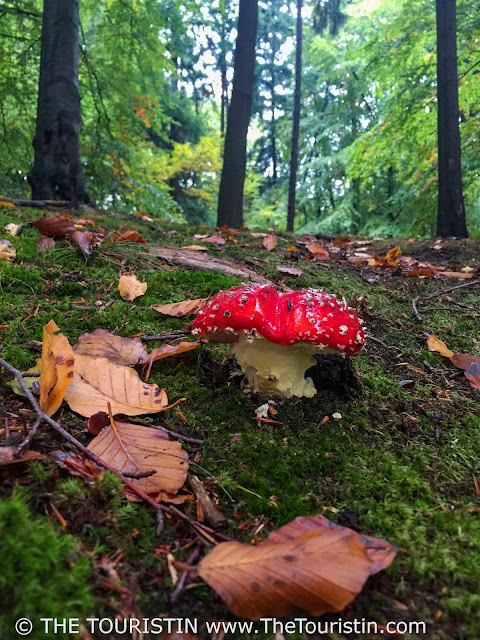
.JPG)
.JPG)


.JPG)
.JPG)
.JPG)
.JPG)
.JPG)

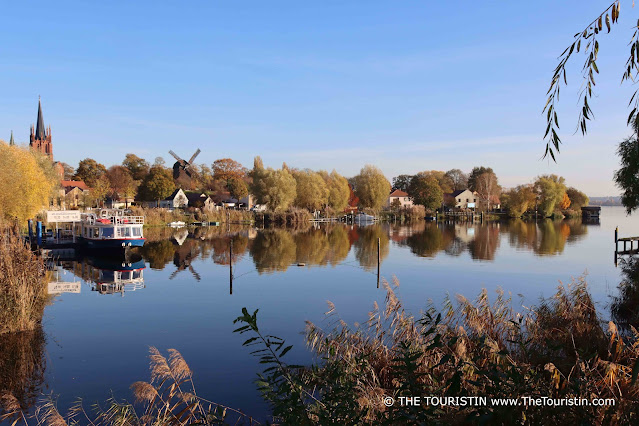

.JPG)
.JPG)
.JPG)
